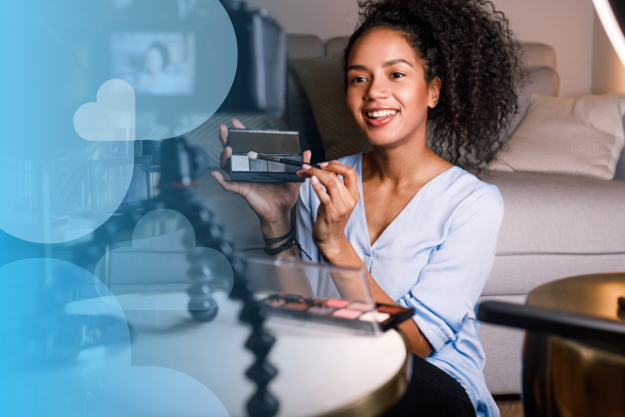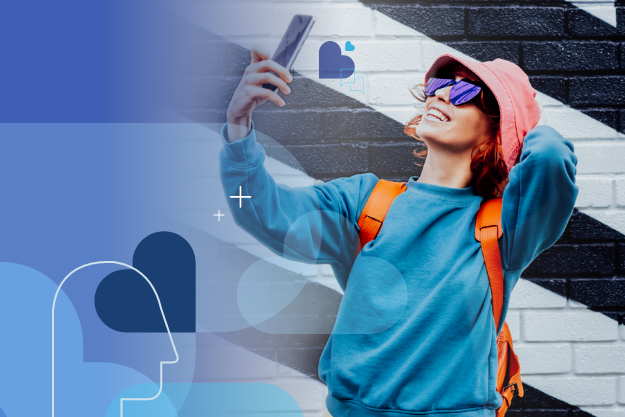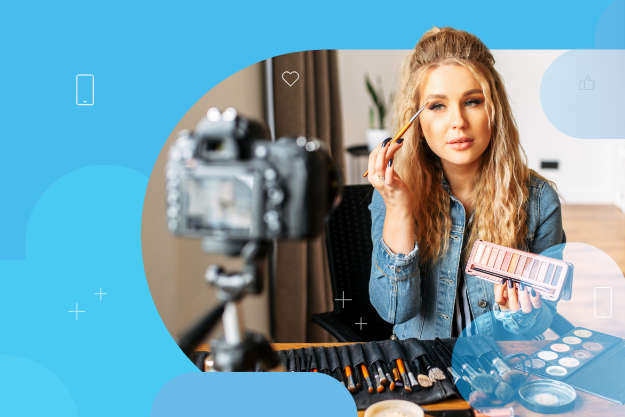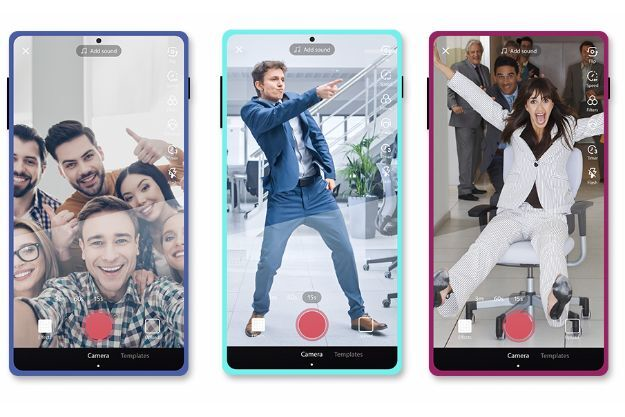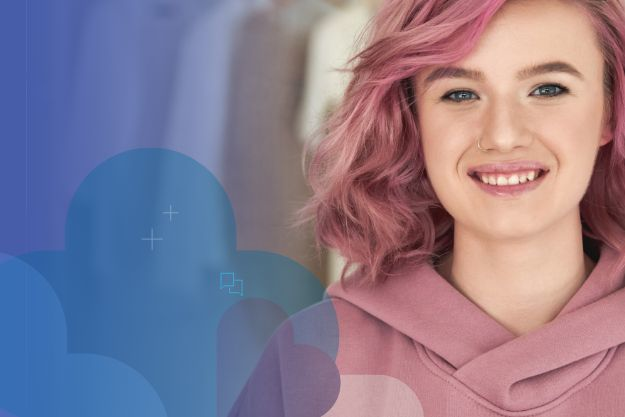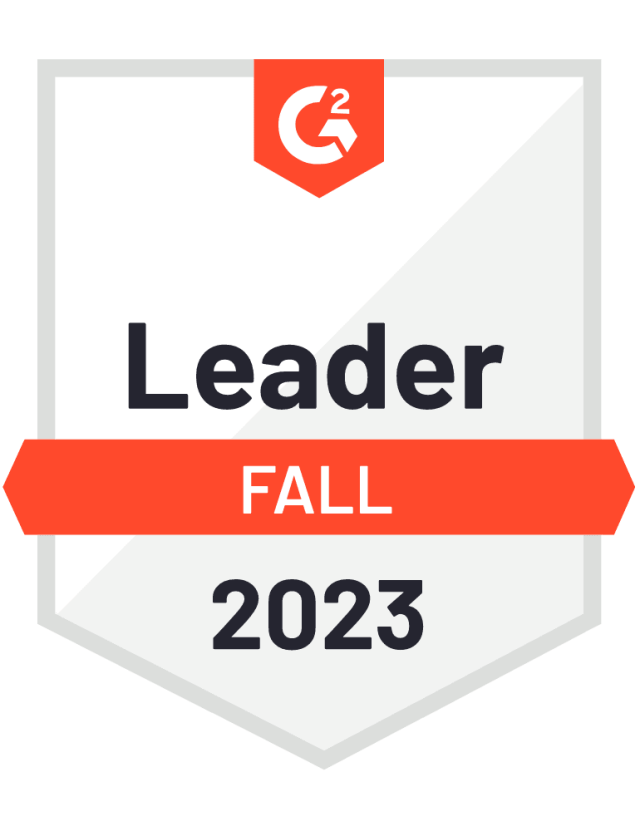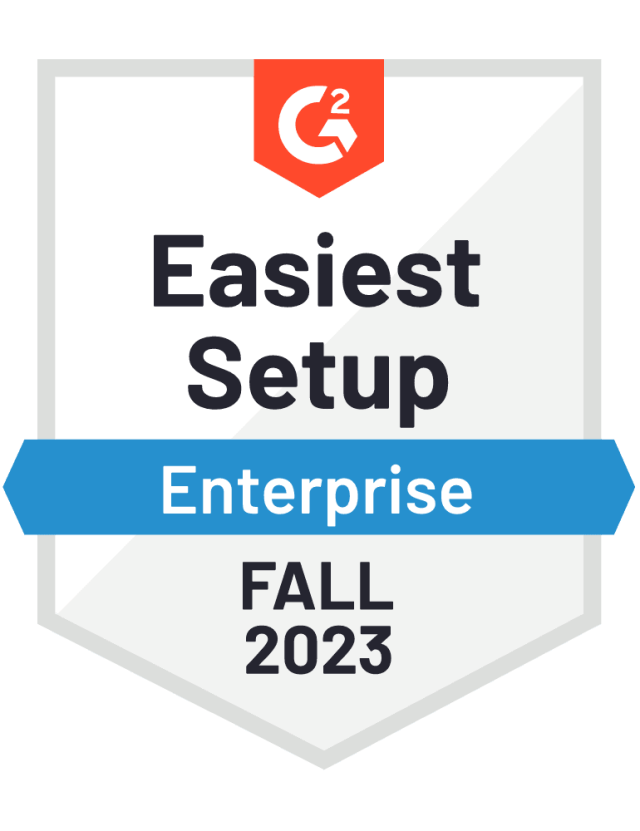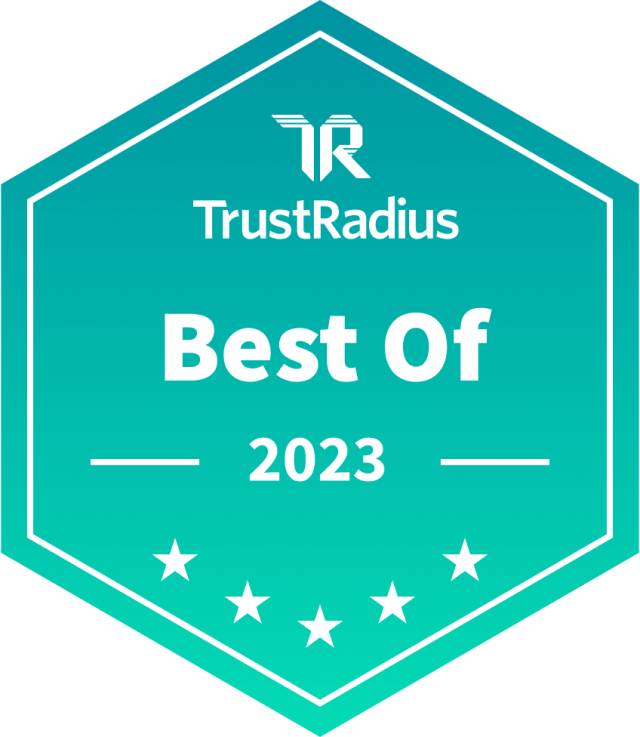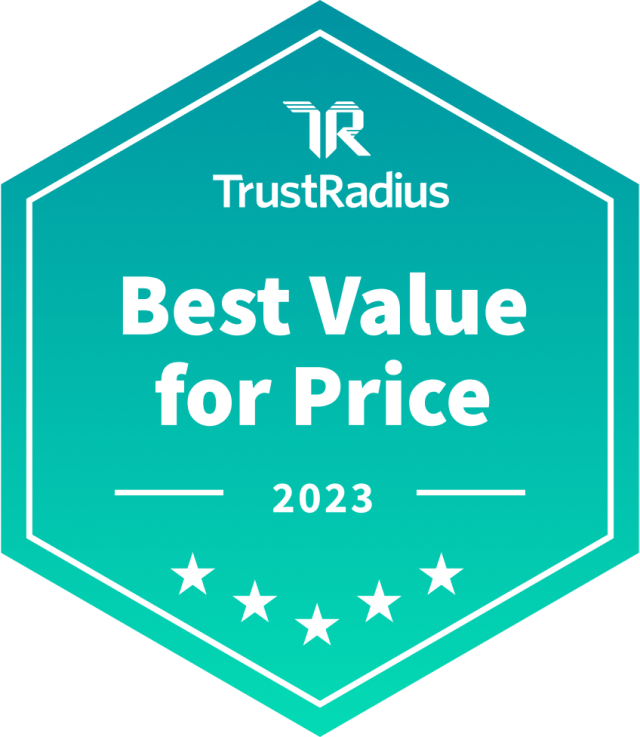With a boom in social media audience and usage, alongside a great deal of online social media marketing courses, it’s essential for most eCommerce brands to have a strong presence on these channels. Collaborating with the right types of influencers in your influencer marketing campaigns helps you cut through the noise on social media while gaining the trust of potential customers.
74% of consumers rely on social media to inform their purchasing decisions, especially when that social media content comes from people they know and trust. While consumers may not know an influencer personally, they often trust that influencer’s recommendations — especially if the creator is not a massive celebrity.
In the last decade, brands have embraced influencer marketing as a content source and opportunity to drive revenue because of this trust that exists between different types of influencers and their audiences. And as the demand for influencer partnership grows, so does the creator economy — the intersection of brands, influencer software, and creators themselves.

More than 50 million people worldwide consider themselves content creators, and 2 million are able to pursue content creation (including being an influencer) as a full-time career. As a brand, what do you do with this information? How do you narrow down hundreds of thousands of creators to discover the best partnerships possible?
That’s where understanding the different types of influencers comes in; having an idea of what size and type of creator you’re looking for will make the discovery process infinitely easier. Collaborating with different types of social media influencers that have a following close to your target audience will help redefine your brand and give it a new perspective.
Different types of influencers for your brand
When it comes to the types of influencers out there, there’s more to it than micro-influencers vs macro-influencers. Let’s take a look at different types of influencers based on a few aspects, primarily follower count and industry.
You can select an influencer more effectively based on the number of followers they have. There are four main types of influencers:
Nano influencers (1K–10K followers)
Micro-influencers (10K–100K followers)
Macro-influencers (100K–1M followers)
Mega or celebrity influencers (over 1M followers)
Let’s take a detailed look at each category.
Nano-influencers (1K–10K followers)
Nano influencers have followers of around 1K-10K on their social media channels. Their style of content is typically based on daily life or random topics that are trending.
A Nano influencer typically shares user-generated content (UGC) regarding the brands and products they value in their day-to-day lives. Although they may not have a huge following, their recommendations and posts can be very influential to their audience. This is because they may have more personal connections with their followers and engage with them frequently.
Nano influencers are right for you if you're a small business with a tight marketing budget, or if you’re a bigger brand who wants to boost content volume. UGC is incredibly memorable and powerful when it comes to influencing consumer purchasing decisions. Plus, with the right permissions in place, you can reuse this content across your marketing channels and website to maximize the value of that social proof.

Apparel brand Windsor showcases UGC from community members alongside influencers in shoppable, on-site displays.
If you are new to influencer marketing, it is the perfect place to start since nano influencers are the most cost-effective option. You can always find nano influencers on almost every social platform, or use a UGC platform like Pixlee TurnTo [now Emplifi] to discover social media content already being shared by nano influencers around your brand. This approach also allows you to automatically permission content and reshare it at scale in website displays, emails, social posts, and more.
Micro-influencers (10K-100K followers)
Despite having a slightly larger following than nano-influencers, micro-influencers can still bond closely with their audience, resulting in greater engagement. Micro-influencers will primarily focus on a certain topic with their content and that is why it is more likely that your target market will be instilled with a desire to purchase.
If you're aiming to drive sales rather than just improve brand awareness, micro-influencers will be a suitable choice for your brand. With them, you can still enjoy a guarantee of better conversions with a visible promoting effect to a wider range of audience. There’s also a good chance micro-influencers are already using and loving your brand’s products.

Embroidery brand DMC primarily works with TikTok micro-influencers active in the embroidery and knitting sphere. This ensures that their posts featuring DMC products will reach a highly relevant and interested audience that’s more likely to engage and buy from the brand
Macro-Influencers (100K–1M followers)
Macro-influencers are well-known internet key opinion leaders and face a broader crowd than micro-influencers. They might be social media stars, bloggers, vloggers, or podcasters. They have a large audience that will be pretty diverse, but still manageable to promote your product in a particular niche.
When onboarding macro influencers, keep in mind that they will be more interested in developing and promoting their self-brands than yours. As a result, you might not experience the advertising effect in which your product dominates the entire content. These creators are also more expensive to work with, and may have more red tape surrounding campaign details than a smaller influencer.
However, it is still an excellent choice for creating awareness of your brand and increasing its reputation. Your brand will gain more value by associating with these influencers, not to mention millions in media value over a short time.
Mega-influencers (over 1M followers)
Mega-influencers can be classified as celebrities and usually have more than 1 million followers. It's not hard to find them as they are all over the internet — Kendall Jenner, Lady Gaga, Kanye West, you name it.
The audience attracted by these mega-influencers is vast. Therefore, you can't expect a high engagement rate. However, you can enjoy high exposure of your brand to more people and become a hot topic for a week or so. Depending on your campaign goals, working with big influencers may be a solid choice.

Onboarding mega-influencers to execute your marketing plan is costly. As mentioned before, in all likelihood, your product won't be the focus of the story; that will be the influencer himself. Yet again, it is the quickest way to get the most eyeballs possible on your product and have your presence felt.
Different types of influencers based on industry
Figures and follower count is not the only factor to categorize influencers. Sometimes working with influencers in a specific industry will yield an unexpected return with less effort. There are many specialties on the internet: games, health, fashion, beauty, technology, and more. We'll cover four of these industries that benefit from influencer partnerships.
With Pixlee TurnTo, your brand can search through influencers on social media as well as individuals already active in your customer base to discover creators based on their interests and what they post about. One way this can be done is by searching terms related to your industry that may be found in users’ bios. More on this in a bit.
1. Health and Fitness
Health and fitness influencers from a variety of backgrounds have been widely followed and praised on social media in the last few years. Consumers look to these influencers for workout inspiration, product discovery, healthy eating tips, and more. The health and fitness industry refers to a number of different brands, and no matter how tangentially related your company is, there’s a good chance that an influencer out there will be willing to promote your product.

For example, yoga apparel company Alo Yoga and nutrition and supplement brand Allmax sell very different products, but can both benefit from the same types of influencers on Instagram Reels.
Health and wellness influencers are an inspiration and motivation for their followers. They often resort to interactive storytelling to make a greater impact and convince their followers. They usually go live and post videos to showcase their daily routines. And if you own an online store that caters to this market, it is the perfect time to promote your sportswear, face masks, or nutritional supplements.
2. Beauty and Fashion
Beauty and fashion influencers have one of the biggest follower bases, with over 62% of women following them on social media. So if you're in the fashion or beauty industry, these statistics should convince you to include this category in your influencer marketing strategy.
Beauty influencers create make-up tutorials and share beauty tips, product reviews, how-tos, etc while fashion influencers will focus on clothing, jewelry, shoes, and other wearable accessories.
These fashion influencers have given a new dimension to fashion merchandising for eCommerce businesses to provide buyers with a realistic representation of how the product would appear and get a sense of its fitting.

A product that would otherwise be lifeless can be given life by fashion influencers, who can present it in a way that gives it personality. While the influencers can demonstrate to customers how and where they can wear your dresses, the target audience can more easily relate to these fashion icons.
So if your online store sells beauty and fashion products, you can always provide content creators with clothing, cosmetics, or accessories, and they will showcase their fits and use smart hashtags to advertise them. And they might not need to discuss them much, as wearing them on screen during live streaming and in posts is a strong illustration effect.
3. Gaming
In today's world, there are ever-increasing gaming influencers who review and compare every new game release. Given that they influence public perceptions of games and gaming consoles, this group is likely the most beneficial to esports brands, but these influencers can be used across the board depending on the product. For example, Red Bull has collaborated with gaming influencers on successful campaigns.
Despite game studios doing everything in their power to ensure a title's success, gaming influencers can decide whether or not it will be a success. In addition to being active on social media, many gaming influencers have been venturing into podcasts lately, where they discuss anything gaming-related, including their opinions on game content and speed-running a game as quickly as possible.
Additionally, these influencers can endorse a wide range of products, including apparel, footwear, and beverages, in addition to gaming consoles and video games.
4. Travel and Hospitality
Although travel-related companies usually aren’t selling a product that can be shipped to an influencer and featured in a social media post like eCommerce brands do, the opportunity still exists for influencers to improve their awareness and conversion rates. The Cosmopolitan of Las Vegas and Delta are great examples of travel and hospitality companies that frequently feature influencer content on TikTok and Instagram, as well as their websites.

Even during the pandemic, travel influencers still engaged their online audiences by planning trips and providing inspiration for travel when it was safe to do so. The Cosmopolitan of Las Vegas connected with influencers traveling to Las Vegas, and these influencers used social media to showcase the safety precautions the hotel had in place coming out of the pandemic.
If you’ve spent time on Instagram, you’ll know that many influencers share content around traveling and brands they rely on to support it.
How to find different types of influencers
Now that you have an idea of what type of influencer might work well with your proposed campaign, the real challenge is finding those people. These are the six steps you should focus on when looking for influencers:
Picking the right social platform
Conducting hashtag research
Reviewing followers and engagement rates
Keeping an eye on the competitors
Manually searching for influencers
Using an influencer marketing platform
Let’s dive into the specifics.
1. Picking the right social platform
You should know the audience you are targeting, so you can choose the platform that can help you reach out to them fastest. Once you’ve selected the right social platform, finding the right influencer becomes much easier.
Analyze platforms like YouTube, Instagram, and Facebook and research to determine which one has the largest active target audience relevant to your product. While TikTok might be a great choice to contextualize Gen Z apparel, it may not resonate as strongly with an older audience.

YouTube may be a better platform for a video game brand to find influencers, as it is home to some of the top gaming influencers in the world. No matter what platform you end up selecting, it’s worth resharing that content on other platforms. While it’ll likely resonate well on its original platform, influencer content can be adapted to work well across different social and brand channels.
2. Conducting hashtag research
By doing hashtag research, you'll have a better understanding of what the current trend is. Don't just record the hashtag. You must click and look into them. You'll get a clearer picture of what your targeted audience is following by at least watching ten relevant videos for each hashtag.
Look for a mix of popular hashtags so you won't leave out any topics your audience cares about. Consider creating your own branded hashtag for users to post content around your brand. Then use a social monitoring tool like Pixlee TurnTo to collect and evaluate the content being shared with your top hashtag(s). By doing so, you'll know which influencer you should pick.
3. Reviewing followers and engagement rates
Once you’ve shortlisted the influencers, review their followers. Try to figure out who they are and what value you may derive from them.
Brands must review influencer accounts and content before hiring them to know their audience demographics, and what they are thinking and doing lately. And by reviewing their following, you might discover other influencers in the community that you can collaborate with.
When reviewing the influencer accounts, always analyze the engagement rates. Keep track of how frequently new postings are published and how responsive the followers are to them. This is another place an influencer marketing platform can help; in Pixlee TurnTo’s dashboard, marketers can easily view and export success metrics from influencer content, even mapping specific influencers and posts to brand revenue.

Making a business decision to work with an influencer who has 10,000 followers and 8,000 likes or views per post is far preferable to working with an influencer who has 100,000 followers but only 1,000 likes or views.
4. Keep an eye on the competitors
You can learn how your competitors are performing and whether or not you both have the same target market by looking at their followers. With influencer platforms like Pixlee TurnTo, brands can filter out influencers working with competitor companies to ensure they’re contacting creators more likely to be interested in a partnership.
Always keep an eye on their marketing strategy, the mediums they're employing for their brand awareness campaigns, and the types of influencers who are promoting their products. You'll have a much greater chance of selecting the ideal influencer if all of these factors have been considered and analyzed.
5. Manually searching for influencers
Influencer reach has grown alongside the industry, and many influencers now have their own websites. They use link-building services and deploy other SEO practices to improve their search engine rankings. So finding them on Google has become much easier.
Make a list of the keywords related to your brand. You can type site-specific results to find influencers only on the specific platform, such as typing ''site:Youtube.com'' or ''site:Tiktok.com'' before your keywords. The algorithm system used by Google will automatically filter out things you don't need.
You can also use the creator marketplaces created by social media platforms like TikTok to discover creators. While this works, it can be highly manual and leaves less room for you to adapt influencer content to other marketing channels.
6. Using an influencer marketing platform
While influencers still respond to outreach from brands on social media and via email, the majority of influencers rely on platforms and networks to discover brand partnerships.

Using one of these platforms is a streamlined way to discover your brand’s highest-value influencers. These platforms have more expertise and experience in running online marketing campaigns, as well as a vast network of quality influencers. You'll get better brand continuity, more cost-effectiveness, and a strategic approach for higher brand awareness. You’ll also be able to manage influencer relationships and each part of campaigns you run with them from one, cohesive platform.
When it comes to evaluating and connecting with different types of influencers, Pixlee TurnTo allows brands to create an opt-in, proprietary database of creators discovered within the platform or outside of it. Then, brands can manage influencer campaigns, posts, and success metrics within the platform, and reshare that content far and wide. It’s the ultimate way to get more bang for your influencer buck.
Remember, it doesn’t mean you must partner with big celebrities to have a successful influencer marketing campaign. The main point is to find the best type of influencer and individual, in general, to bring awareness to their online audiences. That way, more people can know your product better, build trust in you, and believe in your authority and position in your related industry.
Editor's Note: This article was originally published on pixlee.com. Any statistics or statements included in this article were current at the time of original publication.








